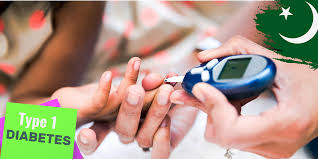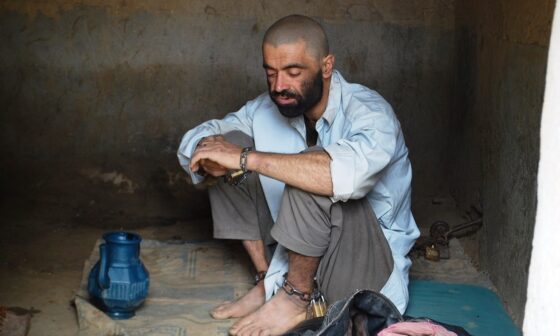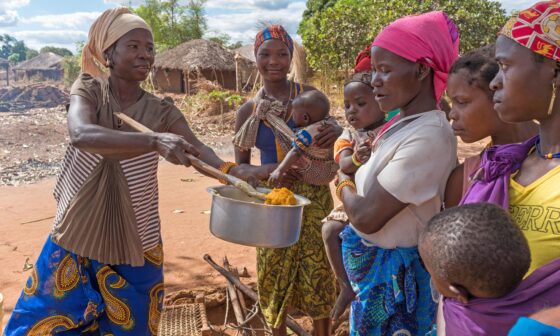Diabetes has emerged as one of Pakistan’s most pressing public health concerns, affecting millions across all age groups and socio-economic backgrounds. Ranked among the top ten countries globally with the highest prevalence of diabetes, Pakistan currently has over 33 million adults living with the condition, according to the International Diabetes Federation. This staggering figure is fueled by multiple factors, including genetic predisposition, poor dietary habits, sedentary lifestyles, and lack of awareness about early signs and preventive care. Urbanization has played a significant role, with processed food consumption and physical inactivity becoming more common. The financial and social burdens of diabetes are immense, particularly when compounded by Pakistan’s under-resourced healthcare system. Despite the growing crisis, many patients remain undiagnosed or untreated until complications become severe, indicating an urgent need for systemic health education and community outreach.

Primary Healthcare System of Pakistan: Challenges to Self-Management of Type 2 Diabetes
Consider the experience of Shabana Ahmed, a 45-year-old schoolteacher from Karachi. Diagnosed with Type 2 diabetes in 2020, Shabana initially dismissed her symptoms—constant fatigue, excessive thirst, and blurred vision—as stress from her demanding job. It wasn’t until she fainted in her classroom that she was rushed to a hospital and diagnosed with diabetes. Her diagnosis came as a shock, but she quickly adopted a new lifestyle with the help of her physician and family. Shabana switched to whole grains, reduced sugar and refined carbohydrate intake, started walking every morning, and began regular monitoring of her blood sugar. She joined a local support group for diabetic women, which helped her stay motivated and emotionally balanced. Today, Shabana educates her students and community members about diabetes management and the importance of early detection. Her journey is a reminder that with proper care, support, and discipline, diabetes can be managed effectively.

The rise in diabetes cases in Pakistan is influenced by several interconnected risk factors. Firstly, there is a genetic susceptibility among South Asians, which makes them more prone to developing insulin resistance. However, environmental and lifestyle choices significantly exacerbate the risk. The typical Pakistani diet, rich in white rice, fried foods, sugary beverages, and sweets, is a major contributor. Physical inactivity is prevalent, especially in urban areas where technological conveniences reduce daily movement. Moreover, cultural norms often discourage women from engaging in outdoor physical activities. Obesity, especially abdominal obesity, is another key driver. Stress, poor sleep, and limited awareness about healthy living further increase vulnerability. Alarmingly, many people remain unaware that they are diabetic until complications arise, such as kidney failure, neuropathy, or vision loss, due to lack of routine screening and public education.
Effective diabetes management hinges on early screening and diagnosis. Unfortunately, healthcare services in Pakistan are not fully equipped to conduct widespread screening programs. Most diagnoses occur incidentally or when patients present with severe complications. Public health campaigns for diabetes remain limited in scale and reach, particularly in rural areas. There is also a shortage of endocrinologists and diabetic educators, which limits patient access to specialized care. To combat these gaps, the government and non-profit organizations have initiated community screening camps, mobile clinics, and school-based awareness programs. Telemedicine and digital health platforms have also started playing a role in diabetes monitoring, especially during the COVID-19 pandemic. However, the effectiveness of these initiatives depends heavily on public participation, resource allocation, and sustained policy support from health authorities.

Pakistan Has the World’s Highest Diabetes Prevalence – and Lacks Focus on Prevention
Self-care strategies are critical for controlling diabetes and preventing complications. These strategies include routine blood glucose monitoring, adherence to prescribed medication, maintaining a balanced diet, and regular physical activity. Individuals with diabetes should aim for at least 30 minutes of moderate-intensity exercise most days of the week. A diabetic-friendly diet emphasizes fiber-rich foods such as legumes, vegetables, and whole grains, while limiting sugar, salt, and saturated fats. Stress management through mindfulness, religious practices, and community support also enhances emotional resilience and improves glycemic control. Diabetic patients must be vigilant about foot care, eye exams, and kidney function tests to prevent long-term damage. Involving family members in the care routine increases adherence and emotional well-being. Schools, mosques, and workplaces can serve as platforms for community education on these self-care principles, turning health literacy into a collective responsibility.

Insights for Health Leaders: UpToDate Point of Care Report
The diabetes epidemic in Pakistan is not merely a health issue—it is a societal challenge requiring a multi-sectoral approach. Shabana Ahmed’s story illustrates that empowered individuals can lead change within their communities, but systemic support is essential to sustain these efforts. National health policy must prioritize diabetes as a critical issue by investing in preventive care, subsidizing medications, and improving access to healthy food options. Training more healthcare providers in diabetes education and expanding the use of technology can strengthen the healthcare system’s capacity. Public-private partnerships and civil society engagement can further amplify outreach. With coordinated efforts, Pakistan can slow the rise of diabetes and improve the quality of life for millions living with this chronic condition.
References:
Dawn News. (2023). “Managing Diabetes: Public Awareness and Challenges.”
International Diabetes Federation. (2023). Diabetes Atlas – Pakistan Profile.
Pakistan Endocrine Society. (2022). National Guidelines for Diabetes Management.
World Health Organization. (2022). Non-Communicable Diseases in South Asia.
Shifa International Hospital Reports. (2023). Diabetes Screening and Trends in Pakistan.
Journal of Pakistan Medical Association. (2023). “Urbanization and Lifestyle Diseases.”
The Express Tribune. (2022). “Hidden Crisis: Diabetes and Public Health in Pakistan.”
Pakistan Institute of Medical Sciences (PIMS). (2023). “Preventive Approaches to Type 2 Diabetes.”






